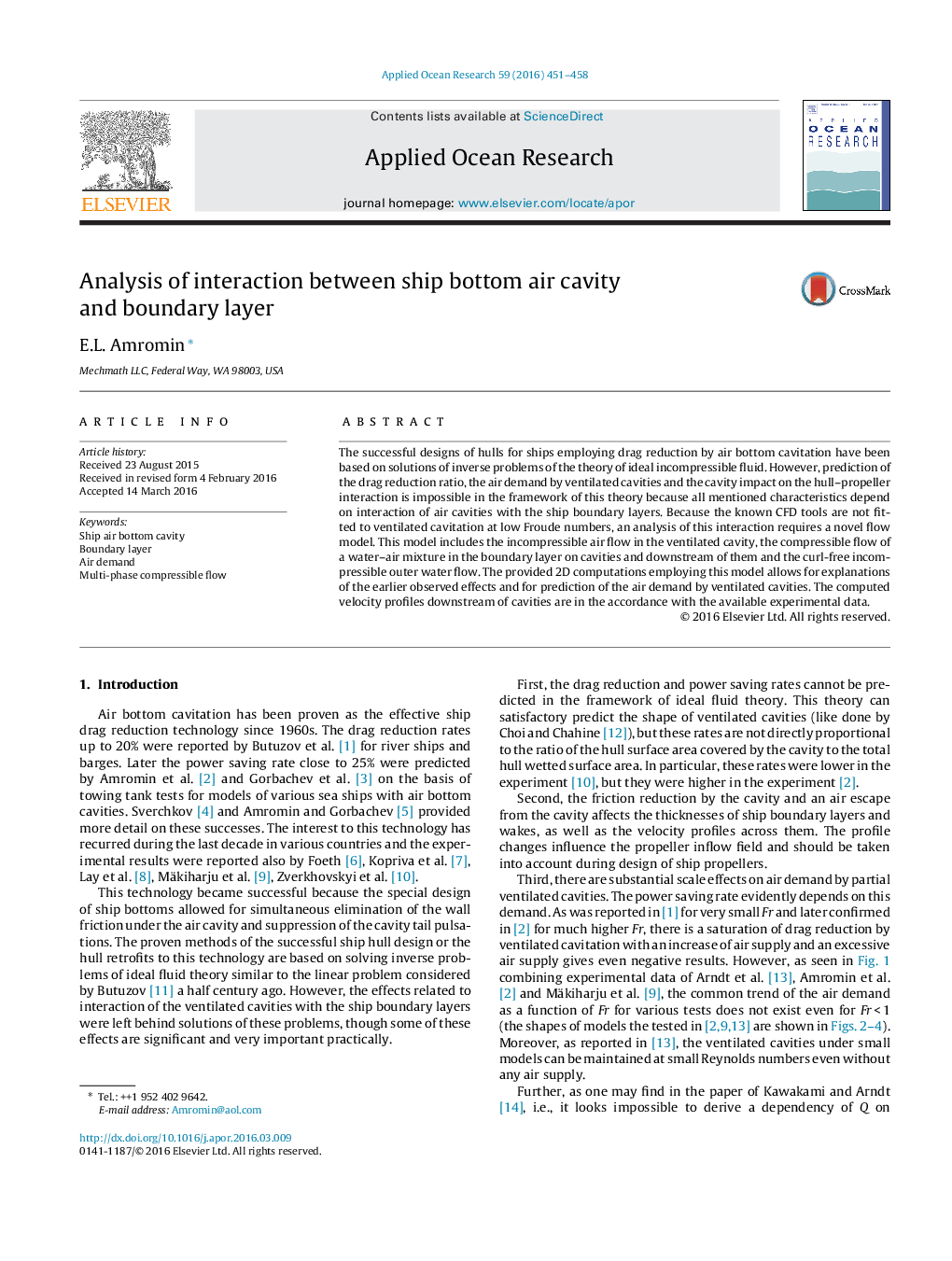| Article ID | Journal | Published Year | Pages | File Type |
|---|---|---|---|---|
| 1719793 | Applied Ocean Research | 2016 | 8 Pages |
•Ship drag reduction by air bottom cavitation.•Ship boundary layer.•Air demand to maintain the cavity.•Multi-phase flow.•Viscous–inviscid interaction.
The successful designs of hulls for ships employing drag reduction by air bottom cavitation have been based on solutions of inverse problems of the theory of ideal incompressible fluid. However, prediction of the drag reduction ratio, the air demand by ventilated cavities and the cavity impact on the hull–propeller interaction is impossible in the framework of this theory because all mentioned characteristics depend on interaction of air cavities with the ship boundary layers. Because the known CFD tools are not fitted to ventilated cavitation at low Froude numbers, an analysis of this interaction requires a novel flow model. This model includes the incompressible air flow in the ventilated cavity, the compressible flow of a water–air mixture in the boundary layer on cavities and downstream of them and the curl-free incompressible outer water flow. The provided 2D computations employing this model allows for explanations of the earlier observed effects and for prediction of the air demand by ventilated cavities. The computed velocity profiles downstream of cavities are in the accordance with the available experimental data.
